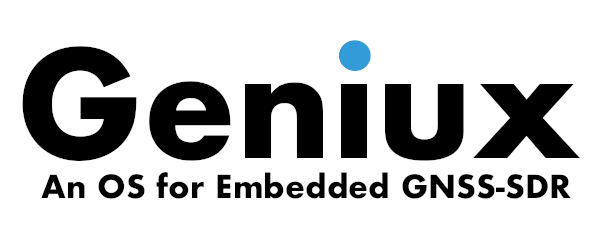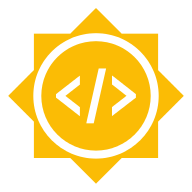5.- Interoperability
Interoperability refers to the ability of making systems work together. In particular, the possibility to exchange information with other free and proprietary software, devices, and systems, including GNSS signals, RF front-ends, external assistance, and all sort of information-displaying or sensor data fusion applications via standard outputs.
Interoperability with GNSS signals
A software-defined receiver needs to interoperate with GNSS signals, defined as combinations of frequency band and channel or code, from which GNSS observables (i.e., measurements of pseudorange, carrier phase, Doppler, and signal strength) can be generated. The new signal structures for GPS, Galileo and Beidou make it possible to generate code and phase observations based on one or a combination of several channels: two-channel signals are composed of I and Q components, whereas three-channel signals of A, B, and C components.
Possible GNSS signals are listed below:
- GPS
- L1 band: \(1575.42\) MHz
- C/A; L1C (D); L1C (P); L1C (D+P); P (AS off); Z-tracking and similar (AS on); Y; M; and codeless.
- L2 band: \(1227.60\) MHz
- C/A; L1(C/A)+(P2-P1) (semi-codeless); L2C (M): L2C (L); L2C (M+L); P (AS off); Z-tracking and similar (AS on); Y; M; and codeless.
- L5 band: \(1176.45\) MHz
- I; Q; I+Q.
- L1 band: \(1575.42\) MHz
- Galileo
- E1 band: \(1575.42\) MHz
- A PRS; B I/NAV OS/CS/SoL; C no data; C+B; A+B+C.
- E5a band: \(1176.45\) MHz
- I F/NAV OS; Q no data; I+Q.
- E5b band: \(1207.14\) MHz
- I I/NAV OS/CS/SoL; Q no data; I+Q.
- E5 (E5a+E5b) band: \(1191.795\) MHz
- I; Q; I+Q.
- E6 band: \(1278.75\) MHz
- A PRS; B C/NAV CS; C no data; B+C; A+B+C.
- E1 band: \(1575.42\) MHz
- GLONASS
- G1 band: \(1602+k \cdot 9/16\) MHz, \(k=-7,...,+12\).
- C/A; P.
- G2 band: \(1246+k \cdot 716\) MHz
- C/A (GLONASS M); P.
- G3 band: \(1202.025\) MHz
- I; Q; I+Q.
- G1 band: \(1602+k \cdot 9/16\) MHz, \(k=-7,...,+12\).
- Beidou
- B1 band: \(1561.098\) MHz
- I; Q; I+Q.
- B2 band: \(1207.14\) MHz
- I; Q; I+Q.
- B3 band: \(1268.52\) MHz
- I; Q; I+Q.
- B1 band: \(1561.098\) MHz
Depending on the region of use, other satellite-based signals can be available:
- SBAS: C/A in the L1 band; I, Q, I+Q in L5.
- QZSS: C/A, L1C (D), L1C (P), L1C (D+P), and L1-SAIF in the L1 band; L2C (M), L2C (L) and L2C (M+L) in the L2 band; I, Q, and I+Q in the L5 band; and S, L, and S+L in the LEX(6) band located at \(1278.75\) MHz.
- IRNSS: A SPS, B RS (D), C RS (P), and B+C in the L5 band; A SPS, B RS (D), C RS (P), and B+C in the S band, located at \(2492.028\) MHz.
Interoperability with radio frequency front-ends
Software-defined receivers intended to operate in real-time with live GNSS signals require an “air-to-computer” interface. That is, a suitable antenna and some hardware providing signal amplification, downshifting, filtering and conversion to the digital domain, plus some standard connection (usually, through USB or Ethernet) to the host computer platform executing the software receiver.
From the software side, each radio frequency front-end brand and model requires the availability of a driver, a software interface to hardware devices, enabling operating systems and other computer programs to access hardware functions without needing to know precise details of the hardware being used.
A driver communicates with the device through the computer bus or communications subsystem to which the hardware connects. When a calling program invokes a routine in the driver, the driver issues commands to the device. Once the device sends data back to the driver, the driver may invoke routines in the original calling program. Drivers are hardware-dependent and operating-system-specific. They usually provide the interrupt handling required for any necessary asynchronous time-dependent hardware interface.
Interoperability with data collection topologies
For raw GNSS (and possibly other sensors) data stored digitally, the software receiver should support the fundamental data collection topologies, as defined by the ION GNSS SDR Standard Working Group (which, by the way, is not related to GNSS-SDR):
- Single-band, single-stream, single file.
- Multi-band, single-stream, single file.
- Multi-stream, single file.
- Multi-sensor, single file.
- Temporal splitting of files.
- Spatial splitting of files.
- Spatial-temporal splitting.
Support of sample formats for the exchange of raw GNSS data:
- Quantization: 1, 2, 4, 8, 16, 32, or 64 bits per sample.
- Encoding: sign, sign-magnitude, signed integer, offset binary, or floating-point.
More details in version 1.0 of the Global Navigation Satellite Systems Software Defined Radio Sampled Data Metadata Standard.
Support of output formats
The software receiver should deliver the results of the processing in several standard output formats:
-
GIS-oriented formats: KML, GeoJSON, SHP.
KML (Keyhole Markup Language) is an XML grammar used to encode and transport representations of geographic data for display in an earth browser. KML is an open standard officially named the OpenGIS KML Encoding Standard (OGC KML), and it is maintained by the Open Geospatial Consortium, Inc. (OGC). KML files can be displayed in geobrowsers such as Google Earth, Marble, osgEarth, or used with the NASA World Wind SDK for Java.
GeoJSON is a geospatial data interchange format based on JavaScript Object Notation (JSON) supported by numerous mapping and GIS software packages, including OpenLayers, Leaflet, MapServer, GeoServer, GeoDjango, GDAL, and CARTO. It is also possible to use GeoJSON with PostGIS and Mapnik, both of which handle the format via the GDAL OGR conversion library. The Google Maps Javascript API v3 directly supports the integration of GeoJSON data layers, and GitHub also supports GeoJSON rendering.
Shapefile is a digital vector storage format for storing geometric location and associated attribute information. It is a popular format for geographic information system (GIS) software. It is developed and regulated by Esri as a (mostly) open specification for data interoperability among Esri and other GIS software products. The shapefile format can spatially describe vector features: points, lines, and polygons, representing, for example, water wells, rivers, and lakes. Each item usually has attributes that describe it, such as name or temperature.
-
Application-specific messages (e.g., NMEA 0183 / 2000, GPX, ISOBUS, proprietary / custom, etc.).
NMEA 0183 is a combined electrical and data specification for communication between marine electronics such as echo sounder, sonars, anemometer, gyrocompass, autopilot, GPS receivers, and many other types of instruments. It has been defined by, and is controlled by, the U.S. National Marine Electronics Association. The NMEA 0183 standard uses a simple ASCII, serial communications protocol that defines how data are transmitted in a sentence from one talker to multiple listeners at a time. Through the use of intermediate expanders, a talker can have a unidirectional conversation with a nearly unlimited number of listeners, and using multiplexers, multiple sensors can talk to a single computer port. At the application layer, the standard also defines the contents of each sentence (message) type, so that all listeners can parse messages accurately. Those messages can be sent through the serial port (that could be for instance a Bluetooth link) and be used/displayed by a number of software applications such as gpsd, JOSM, OpenCPN, and many others (and maybe running on other devices).
GPX (the GPS Exchange Format) is a light-weight XML data format for the interchange of GPS data (waypoints, routes, and tracks) between applications and Web services on the Internet. The format is open and can be used without the need to pay license fees, and it is supported by a large list of software tools.
-
RTCM-104 messages (specify version, type and rate). RTCM messages should be streamed over a communication network as defined by the Networked Transport of RTCM via Internet Protocol (NTRIP 1.0, 2.0).
RTCM SC-104 provides standards that define the data structure for differential GNSS correction information for a variety of differential correction applications. Developed by the Radio Technical Commission for Maritime Services (RTCM), they have become an industry standard for the communication of correction information. GNSS-SDR implements RTCM version 3.2, defined in the document RTCM 10403.2, Differential GNSS (Global Navigation Satellite Systems) Services - Version 3 (October 7, 2016). A newer version 3.3 (August 19, 2022) can be purchased online. The software receiver should implement a TCP/IP server, acting as an NTRIP source that can feed an NTRIP server. NTRIP (Networked Transport of RTCM via Internet Protocol) is an open standard protocol that can be freely downloaded from here, and it is designed for disseminating differential correction data (e.g. in the RTCM-104 format) or other kinds of GNSS streaming data to stationary or mobile users over the Internet.
-
RINEX observation and navigation data files. Specify version: 2.10, 2.11, 3.00, 3.02, 3.03, 3.04, 3.05, or 4.00.
RINEX (Receiver Independent Exchange Format) is an interchange format for raw satellite navigation system data, covering observables and the information contained in the navigation message broadcast by GNSS satellites. This allows the user to post-process the received data to produce a more accurate result (usually with other data unknown to the original receiver, such as better models of the atmospheric conditions at the time of measurement). RINEX files can be used by software packages such as GNSSTk, RTKLIB, and gLAB, among many others.
-
Custom output formats: if the software receiver needs to output data that is not covered by any of the above standards, there is a need for a specific output for a given external application, or there is a need for a structured data serialization mechanism. This mechanism needs to be efficient (i. e. binary data instead of plain text), fast (it needs to be executed in real-time), portable, well-documented, and easy to read by other external applications (ideally, language-neutral). Support of backward and forward-compatible formats is a desirable feature since the number of parameters extracted by the software receiver tends to grow along with different versions. A forward-compatible serialization system should allow doing that without breaking existing external applications still using the old format. An example of an open-source software library that fulfills these requirements is Protocol Buffers, which allows reading data from many different languages such as C++, C#, Dart, Go, Java, Javascript, Ruby, Objective-C, PHP, and Python.
Interoperability with data link protocols
The software receiver should support several data link communication protocols, both to the digital signal source (the radio frequency front-end, the network providing a data stream) and to other systems expecting the outputs of the processing:
- Ethernet (IEEE 802.3ab / 802.3ae / others).
- Wireless LAN (IEEE 802.11 family).
- Bluetooth (specify version).
- CAN bus (see ISOBUS, standard ISO 11783).
- Serial communication: USB (specify version) / RS-232 / RS-422 / RS-485 / PCI Express / Pmod / FMC - VITA57 / SPI / I\(^2\)C / MIL-STD-1553 / others.
Indicators of Interoperability
It follows a list of possible interoperability indicators for a software-defined GNSS receiver:
- Number of GNSS signals, defined as combinations of frequency band and channel or code, from which GNSS observables (i.e., measurements of pseudorange, carrier phase, Doppler and signal strength) can be generated by the software receiver.
- Number of GNSS signals that can be processed at the same time.
- Number of device drivers, or physical radio frequency front-ends brands /
models the software receiver can interact to (i.e., configure and read
samples from it).
- Specify data link protocol for communication between the front-end and the host computer executing the software-defined GNSS receiver.
- Number of supported combinations of data collection topologies and formats.
- Number of supported standard output formats.
- GIS formats: KML, GeoJSON, Shapefile, others.
- Application-specific formats: NMEA 0183 / 2000, GPX, others. Specify version.
- Custom formats: portable, well-documented, easily readable by other programming languages, support of backward and forward-compatible formats.
- Geodesic formats: RINEX,
RTCM-104.
- Generation of RINEX observation and navigation data files. Specify version.
- Real-time generation of RTCM messages in real-time. Type and frequency of real-time generated RTCM messages. Specify RTCM version.
- Number of supported data link protocols for output data.




Leave a comment